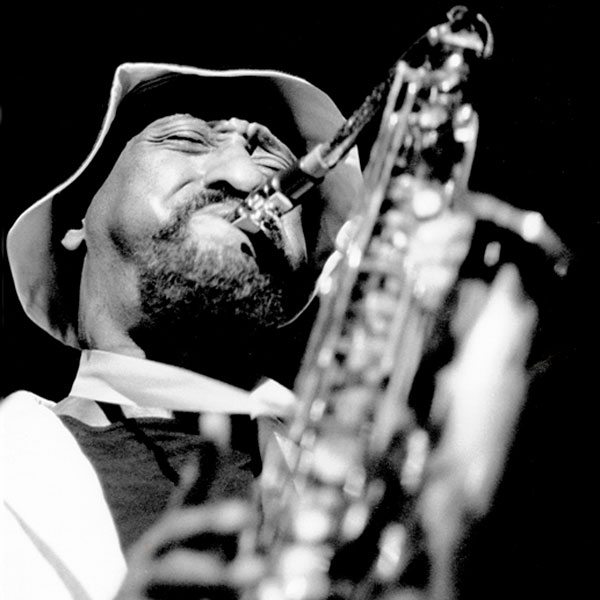
November 14, 2017; Inside Philanthropy
As Mike Scutari reports in Inside Philanthropy, jazz legend Sonny Rollins designated a “major gift” to Oberlin College to create the Sonny Rollins Jazz Ensemble Fund. The creation of another scholarship fund is itself not newsworthy; what makes this case more unusual, however, is that Rollins is explicitly linking the fund to social commitment.
Commenting on his gift, Rollins, now 87, says, “The humanity element has to be a big presence in everything young players do. People are hungry for a reason to live and to be happy. We’re asking these young musicians to look at the big picture, to tap into the universal power of a higher spirit, so they can give people what they need. Giving back to others teaches inner peace and inner spirituality. Everything is going to be open for them if they devote themselves in this way.”
Oberlin’s press release summarizes the jazz musician’s biography:
Born in New York City in 1930, Walter Theodore “Sonny” Rollins started playing the saxophone at the age of eight, receiving guidance from pianist and composer Thelonious Monk. By the time he finished high school, Rollins was playing professionally in the Harlem clubs near his home. In seven decades of performing, he collaborated with countless jazz luminaries, from Miles Davis to McCoy Tyner, and made more than 60 records showcasing his unsurpassed improvisational chops and distinct compositional voice. Rollins won multiple Grammy Awards, including a 2004 award for lifetime achievement, and was honored with the National Medal of Arts in 2010.
The college also notes the social vision behind the donation: “The gift was made in recognition of the institution’s long legacy of access and social justice advocacy. In particular, Rollins was moved by Oberlin’s place as the first institution of higher learning to adopt a policy to admit students of color and the first to confer degrees to women, and by the contributions of alumni such as Will Marion Cook, a black violinist and composer who graduated in 1888 and who went on to become an important teacher and mentor to Duke Ellington.”
Sign up for our free newsletters
Subscribe to NPQ's newsletters to have our top stories delivered directly to your inbox.
By signing up, you agree to our privacy policy and terms of use, and to receive messages from NPQ and our partners.
As Scutari explains, this vision is incorporated into the conditions of admission to the program,
Beginning in spring 2018, Oberlin jazz studies majors may audition for what’s informally dubbed “The Sonny Ensemble.” Each student’s candidacy will be considered on the basis of four criteria: an audition, academic achievement, “thoughtful response to a question about the place of jazz in the world,” and “service to humanity.”
Once admitted, students who become “Sonny Scholars” will need to undertake a winter-term project, approved by their principal studio professor, that “embodies Rollins’ spirit of giving.” Oberlin adds that, “Each ensemble member’s commitment will be memorialized in the Sonny Scholar Ledger, a volume that declares each musician’s adherence to the principle of giving. The cover of the ledger is emblazoned with these words from Rollins: ‘Trust that later on in life, there’s something bigger for you when you serve others.’”
NPQ has written about the intersection of art and activism many times before. For instance, this past September, NPQ’s Cyndi Suarez highlighted the importance of linking artists with resistance movements.
As Scutari points out, “Socially conscious arts philanthropy has typically focused on giving to museums, individual artists and performing arts organizations.” Scutari adds that today, “Most funders fervently believe that art should be a vehicle for social change. The only issue of disagreement is the degree to which it should be a vehicle for social change.” Linking art to activism, in short, is not uncommon, but universities have often been, as Scutari points out, more career-focused. Scutari suggests that the Sonny Scholar program may portend an “intriguing redefinition of arts education.”
Linking art to lived experience, in short, is a growing trend. But it is hardly a new idea. In 1936, as civil war loomed, famed poet and dramaturg Federico García Lorca remarked, “The idea of art for art’s sake is something that would be cruel if it weren’t, fortunately, so ridiculous…At this dramatic point in time, the artist should laugh and cry with the people. We must put down the bunch of lilies and bury ourselves up to the waist in mud to help those who are looking for lilies.” Our times may not be as dire as Spain in 1936, but as the US itself faces growing fissures, it is encouraging to see artists like Rollins foster social engagement in the next generation.—Steve Dubb













